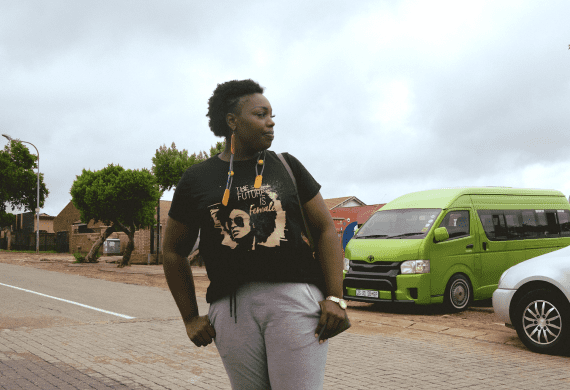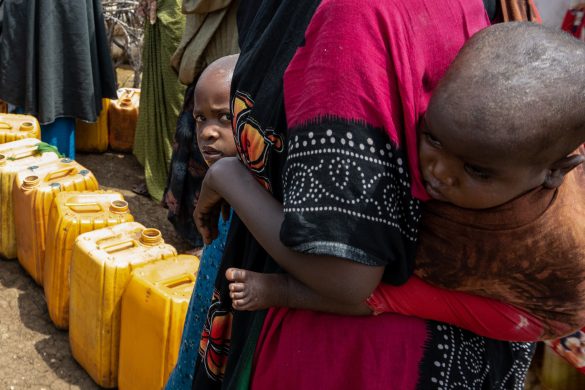Eksperter er dybt uenige om, hvorvidt krisen i Afrikas nyeste nation er resultatet af slemme rifter i det etniske kludetæppe af grupper og interesser eller om det hele mest drejer sig om en politisk magtkamp i en ludfattig nation, der i forvejen bruger over halvdelen af pengene på militæret.
NAIROBI, 16 January 2014 (IRIN): Since violence first broke out on 15 December, the conflict in South Sudan has left thousands dead and displaced hundreds of thousands more.
Representatives of President Salva Kiir and his rival, former vice president Riek Machar, are meeting in Addis Ababa to attempt to negotiate a settlement and a cease-fire.
Meanwhile, think tanks, academics and experts have been scrambling to explain the causes of the bitter acrimony and bloodshed that has engulfed the country.
What is the role of the armed forces?
“The current conflict has three main dimensions – a political dispute within the ruling party, the Sudan People’s Liberation Movement (SPLM); a regional and ethnic war; and a crisis within the army itself,” Alex de Waal and Abdul Mohammed wrote in Foreign Affairs.
International Crisis Group notes:
“What has for some time been a political crisis within the ruling Sudan People’s Liberation Movement (SPLM) has now spilled over into an army that has long been riven by internal problems, including ethnic divisions and tensions”.
“The blurred (uklare) lines between these institutions, senior political figures and ethnic communities – as well as wide-scale arms proliferation – make the current situation particularly volatile.”
The dysfunctional army, de Waal and Mohammed argue, traces back to the signing of the Comprehensive Peace Agreement (CPA) in 2005:
“When the CPA was signed, the SPLA [Sudan People’s Liberation Army] was, in fact, just one of many military forces in South Sudan. Arguably as strong as the SPLA was the rival South Sudan Defense Forces, which is organized and funded by Khartoum and has a strong ethnic-regional base”.
“Many feared a southern civil war following the peace with the north. But Kiir, newly installed in 2005, reached out to the SSDF leadership and other militia commanders to offer them membership in both the army and government.”
The government spent 55 percent of their budget on defence, and more than 80 percent of that went to the salaries of the more than 200.000 people employed by the SPLA.
“Over time, the payout created insurmountable obstacles (uoverstigelige forhindringer) to army reform and professionalization. The army was little more than a coalition of ethnic units tied together by cash handouts,” they said.
“Intense competition for political power”
Jok Madut Jok, executive director of the Sudd Institute, a think tank in Juba, also points to the fissures (sprækker) built up during previous conflicts:
“Intense competition for political power within the ruling SPLM was bound to spark violence, as it was likely to touch the wounds of the last three decades of liberation wars, during which South Sudanese had turned guns against one another over leadership of the movement.”
These conflicts “were often patched up or swept under the rug in the interest of keeping the eyes on the common goal, but they were never sufficiently resolved, and far too many communities were left wanting for justice.”
He mainly blames the outbreak in violence on “the failure of the post-war development programs to meet the dividends that the citizens highly expected going into independence”.
Most people in the country have not seen the development, wealth, reconciliation and security that they expected when South Sudan became an independent state.
Intense competition for political power within the ruling SPLM was bound to spark violence, as it was likely to touch the wounds of the last three decades of liberation wars, during which South Sudanese had turned guns against one another over leadership of the movement
What about ethnicity?
Hannah Bryce, an international security expert at Chatham House, argues that this has been primarily an ethnic conflict:
“The dynamics of the leadership struggle between President Salva Kiir, a Dinka, and former vice president Riek Macher, a Nuer, colours politics throughout the country, illustrating the prevalence of political tribalism at the highest office.”
She also argues that there is a strong perception by other ethnic groups that the SPLM and SPLA are dominated by the Dinka.
But Amir Idris, a professor and chair of the Department of African and African American Studies at Fordham University, strongly disagrees.
“Much of the colonial writing on the social and political cultures of South Sudan have focused on two groups: the Dinka and the Nuer. Very few have focused on other ethnic groups. Politics, therefore, came to be seen and defined through the lenses of these two groups”.
“It is inaccurate to interpret the recent political crisis as an ethnic conflict between President Salva Kiir, a Dinka, and his former vice president, Riek Machar, a Nuer, for it assumes that the political stability can be restored if the two ethnic groups agree to share political power,” he said.
He notes that the participation of all groups in peace agreements is crucial to the success of peace talks:
“The ongoing conflict is neither ethnic nor cultural; it is a political one. Second, these conflicting ethnic identities, such as the Nuer and the Dinka, are not static”.
“They could become peaceful identities if the state was redefined and restructured in a way that makes the managing of and coexistence between overlapping identities possible in postcolonial South Sudan,” he said.
This, he thinks, requires a political solution.
Are administration failures to blame?
Læs videre på
http://www.irinnews.org/report/99487/briefing-what-analysts-are-saying-about-south-sudan-s-crisis














